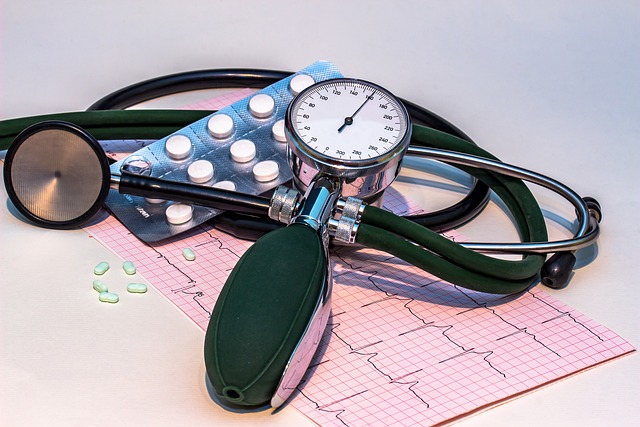
Blood pressure is one of the most critical indicators of cardiovascular health. It measures the force of blood against the walls of arteries as the heart pumps. Understanding blood pressure levels can help individuals monitor their health and recognize potential issues early.
Blood pressure is expressed in two numbers:
- Systolic Pressure: The first (top) number, representing the pressure when the heart beats.
- Diastolic Pressure: The second (bottom) number, representing the pressure when the heart is at rest.
Both numbers are measured in millimeters of mercury (mm Hg). Let’s explore what each combination of systolic and diastolic readings means and look at a detailed table ranging from 60 to 220 mm Hg.
Table of Blood Pressure Levels and Their Meanings
The following table shows the interpretations of various blood pressure readings from low (hypotension) to high (hypertension crisis). Each entry includes a specific combination of systolic and diastolic levels, with an indication of what each range means for health.
| Systolic (Top Number) | Diastolic (Bottom Number) | Blood Pressure Level | Meaning/Action Required |
|---|---|---|---|
| 60-89 | 40-59 | Severely Low Blood Pressure | Hypotension: Seek medical advice, as this may indicate severe health issues. |
| 90-99 | 60-79 | Low Blood Pressure | May be normal for some; monitor if symptoms like dizziness occur. |
| 100-119 | 60-79 | Normal Blood Pressure | Optimal; maintain a healthy lifestyle to keep these levels. |
| 120-129 | 80-84 | Elevated Blood Pressure | Pre-hypertension; adopt lifestyle changes to prevent progression. |
| 130-139 | 85-89 | Hypertension Stage 1 | Lifestyle changes and possibly medication may be necessary. |
| 140-159 | 90-99 | Hypertension Stage 2 | Consult a doctor; likely requires medication and lifestyle adjustments. |
| 160-179 | 100-109 | High Blood Pressure Crisis | Urgent medical attention may be needed; risk of severe complications. |
| 180-219 | 110-119 | Hypertension Emergency | Immediate medical intervention is critical; severe risk to health. |
| 220+ | 120+ | Hypertension Crisis | Emergency; seek emergency medical help immediately. |
Explaining Each Category
- Severely Low Blood Pressure (Hypotension)
- Readings: 60-89 systolic / 40-59 diastolic
- Meaning: Blood pressure is too low, which can result in dizziness, fainting, and, in severe cases, shock. It may be due to dehydration, medication side effects, or underlying health conditions.
- Action: Seek medical advice to determine the cause and appropriate treatment.
- Low Blood Pressure
- Readings: 90-99 systolic / 60-79 diastolic
- Meaning: Generally not a problem if there are no symptoms. Some people naturally have lower blood pressure.
- Action: Monitor if dizziness or fainting occurs, and consult a doctor if symptoms are present.
- Normal Blood Pressure
- Readings: 100-119 systolic / 60-79 diastolic
- Meaning: Ideal blood pressure level, associated with low risk of cardiovascular disease.
- Action: Continue maintaining a healthy lifestyle, including a balanced diet, regular exercise, and managing stress.
- Elevated Blood Pressure
- Readings: 120-129 systolic / 80-84 diastolic
- Meaning: Higher than normal but not yet in the hypertension range. This can be a warning sign of potential hypertension if lifestyle factors aren’t addressed.
- Action: Adopt lifestyle changes, such as reducing salt intake, exercising, and managing stress, to prevent progression.
- Hypertension Stage 1
- Readings: 130-139 systolic / 85-89 diastolic
- Meaning: Early stage of high blood pressure, indicating the heart is working harder than it should.
- Action: Consult with a doctor about lifestyle changes and possible medication.
- Hypertension Stage 2
- Readings: 140-159 systolic / 90-99 diastolic
- Meaning: A more serious level of high blood pressure that often requires medical intervention.
- Action: Likely requires medication alongside lifestyle adjustments to lower blood pressure.
- High Blood Pressure Crisis
- Readings: 160-179 systolic / 100-109 diastolic
- Meaning: Extremely high blood pressure that puts the body at immediate risk.
- Action: Seek urgent medical attention as this level of blood pressure can lead to severe health complications.
- Hypertension Emergency
- Readings: 180-219 systolic / 110-119 diastolic
- Meaning: Blood pressure at this level is life-threatening, risking organ damage.
- Action: Immediate medical intervention is critical to avoid life-threatening outcomes.
- Hypertension Crisis
- Readings: 220+ systolic / 120+ diastolic
- Meaning: This is a medical emergency. Immediate action is needed to lower blood pressure and prevent complications such as heart attack or stroke.
- Action: Seek emergency help without delay.
Understanding Blood Pressure Readings
The goal of managing blood pressure is to keep it within the normal range of 100-119 / 60-79 mm Hg, as this range poses the least risk to cardiovascular health. High blood pressure damages arteries over time, leading to serious complications like heart disease, stroke, and kidney damage. On the other hand, extremely low blood pressure can also be problematic, as it may reduce the flow of oxygen to vital organs.
Tips to Maintain Healthy Blood Pressure
- Eat a Balanced Diet: A diet low in salt, rich in fruits, vegetables, and lean proteins can significantly improve blood pressure levels.
- Exercise Regularly: Aim for 150 minutes of moderate exercise per week, such as walking, swimming, or cycling.
- Manage Stress: Chronic stress can raise blood pressure, so practice stress management techniques like meditation or deep breathing.
- Limit Alcohol and Quit Smoking: Both alcohol and tobacco can elevate blood pressure, so it’s important to consume them in moderation or quit altogether.
Final Thoughts
Regular blood pressure monitoring is crucial for managing and preventing hypertension. Knowing your blood pressure levels and understanding what they mean allows you to take timely actions that can improve your long-term health. Remember, the sooner you address high or low blood pressure, the better you protect yourself from serious health risks. Consult a healthcare professional for personalized advice and treatment options if your readings fall outside the normal range.

